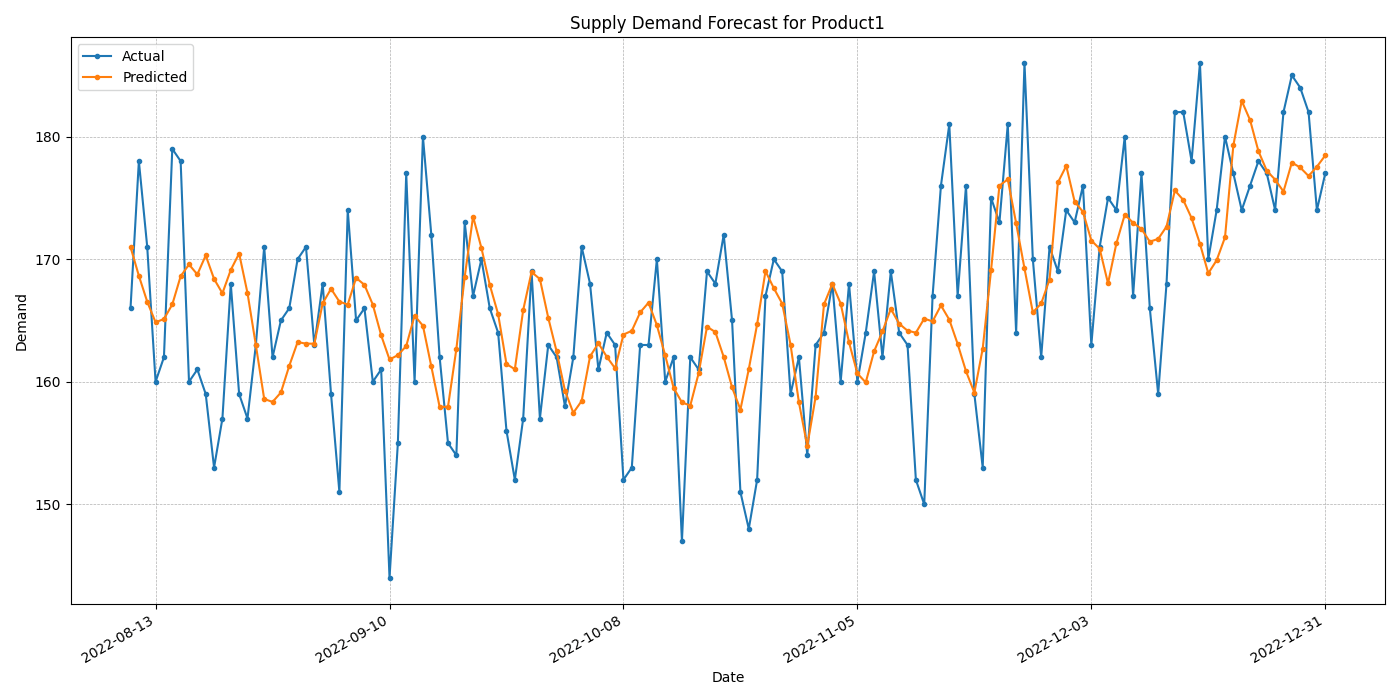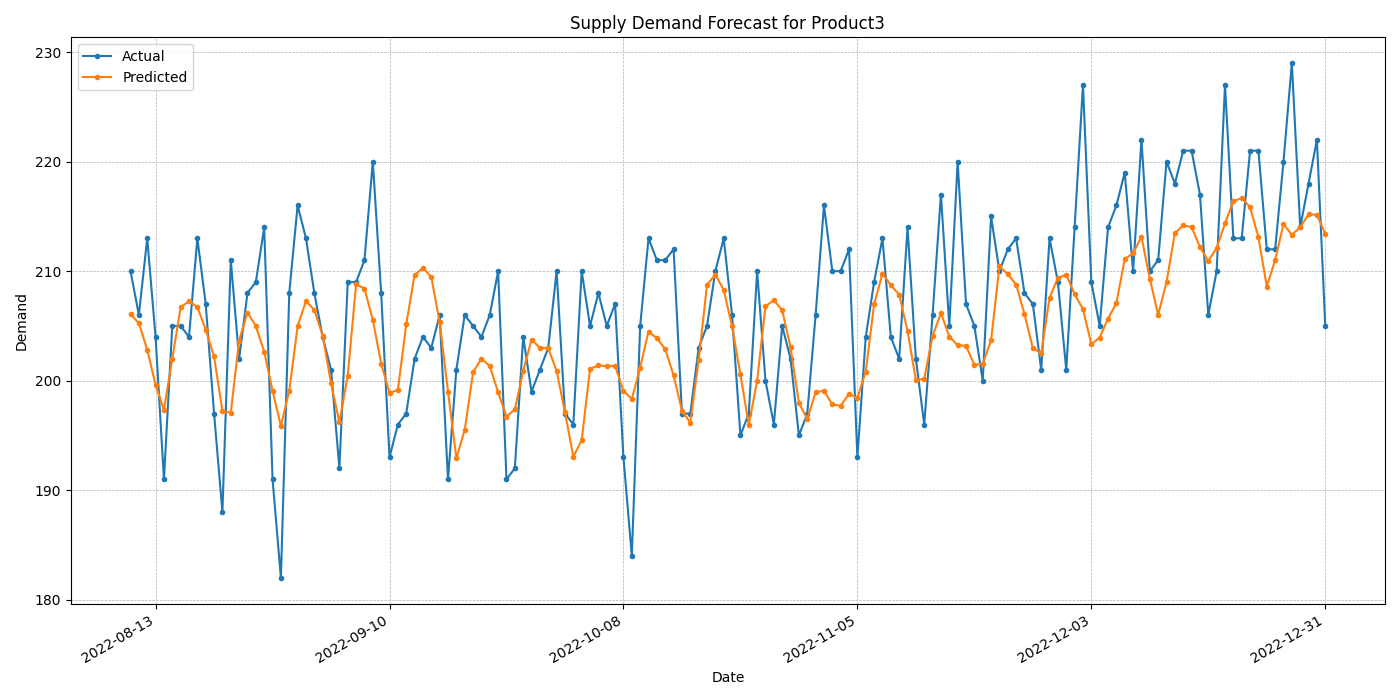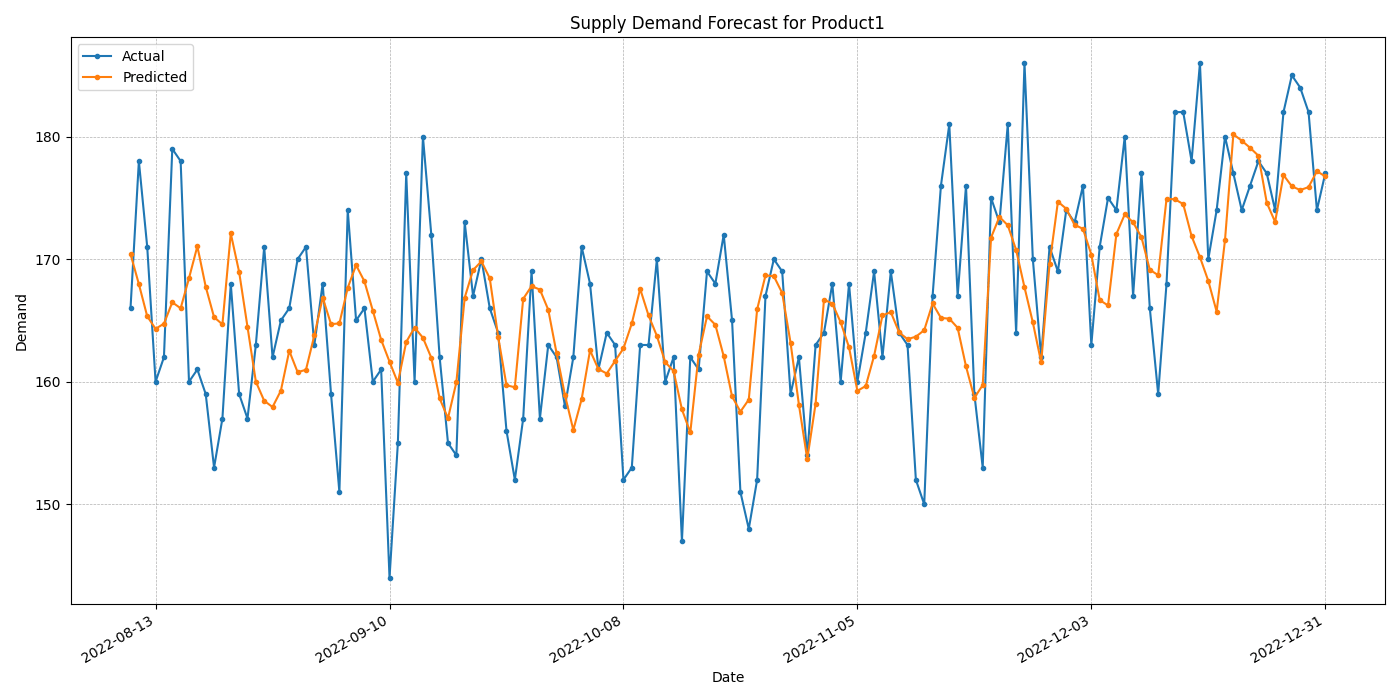
SupplyForecast project report:
Project Name: SupplyForecast
Duration: October 2, 2024 – October 6, 2024
Total Time Spent: 12 hours
Project Overview
The SupplyForecast project focuses on predicting product demand in supply chains. Accurate demand forecasting helps companies optimize inventory management and reduce holding costs. By predicting demand effectively, businesses can avoid stock shortages or overstocking, leading to improved operational efficiency.
Objectives
- Predict demand for products in a supply chain using historical sales data.
- Optimize inventory levels and minimize storage costs.
- Enable businesses to make data-driven decisions through demand visualization.
Approach and Methodology
1. Data Collection
- Datasets Used: Custom-generated dataset resembling structures found in Walmart Sales Dataset or M5 Forecasting Dataset.
- Data Structure: A CSV file with four columns:
- Date
- Customer demand for three products
2. Data Preprocessing
- The generated data was structured into sequences suitable for time-series modeling.
- Sequence preparation ensured compatibility with the LSTM model input requirements.
3. Model Development
- Model Used: Long Short-Term Memory (LSTM) neural network
- Frameworks and Libraries: TensorFlow and Keras
- Key Configurations:
- Activation Function: ReLU (tested alternative: Tanh)
- Model architecture was designed to capture complex temporal dependencies in the data.
4. Model Training
- The prepared sequences were used to train the LSTM model.
- Predictions were stored for subsequent analysis and comparison.
5. Visualization
- Tools: Matplotlib and Plotly
- Created visual plots to analyze the demand trends over time.
- Compared results using different activation functions (ReLU vs. Tanh).
- Observation: The Tanh activation function produced slightly wider prediction intervals, which could be advantageous for datasets with broader demand ranges.




Key Findings
- Accurate Demand Prediction:
The LSTM model successfully captured temporal patterns and produced reliable demand forecasts. - Impact of Activation Function:
- Using ReLU resulted in sharp and focused predictions.
- Switching to Tanh produced wider prediction intervals, offering more conservative estimates in certain scenarios.
- Visualization Insights:
- The demand trends visualized in date-demand plots highlighted seasonal and temporal demand variations, aiding better decision-making.
Conclusion
The SupplyForecast project successfully showcased how advanced time-series models, specifically LSTM, can be utilized for demand forecasting in supply chains. By accurately predicting product demand, businesses can make informed decisions to optimize inventory levels, reduce holding costs, and improve overall operational efficiency.
Key takeaways from this project include the effectiveness of the LSTM model in capturing temporal patterns and its ability to provide reliable forecasts. The choice of activation functions, such as ReLU and Tanh, has significant impacts on the prediction outcomes, offering options for more precise or conservative estimates depending on the demand variability.
The project’s methodologies, from data collection and preprocessing to model development and visualization, provide a solid foundation for further research and practical applications. By integrating real-world datasets like the Walmart Sales Dataset or M5 Forecasting Dataset, the model’s accuracy and business relevance can be significantly enhanced, making it a valuable tool for supply chain management.
In conclusion, the SupplyForecast project not only demonstrated the potential of machine learning in demand forecasting but also highlighted the importance of data-driven decision-making in enhancing business operations. The insights gained from this project pave the way for further advancements and scalability in supply chain optimization.
Our GitHub Repository: SupplyForecast Project Repository
Figure Reference: Comparative visualizations of demand predictions are available in the repository.



